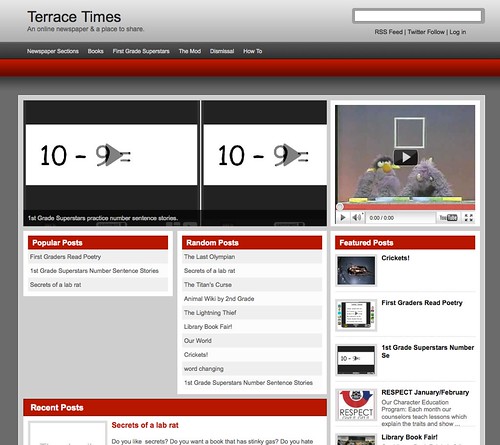There is an elementary school student newspaper done by a friend of mine using wordpress.
It is still “early days” but the kids are taking to it.
I’m told some student editors were appointed in 4th grade yesterday.
By this morning, they were holding court in the school library, before school started. Each had a table with a netbook and were having writing conferences with authors from their class as they edited their submitted work for publication.
No direction was given for this activity – it was organic.
Very cool stuff.
The security on it is flawless. No information is given to identify anything about the school – whatsoever. No school names, no student names, no county names, no state, no country. Very, very cool stuff indeed.
No walled garden here – just the safety of anonymity.
And the kids don’t seem to care. They know what they’ve written, and their friends and families know too.


